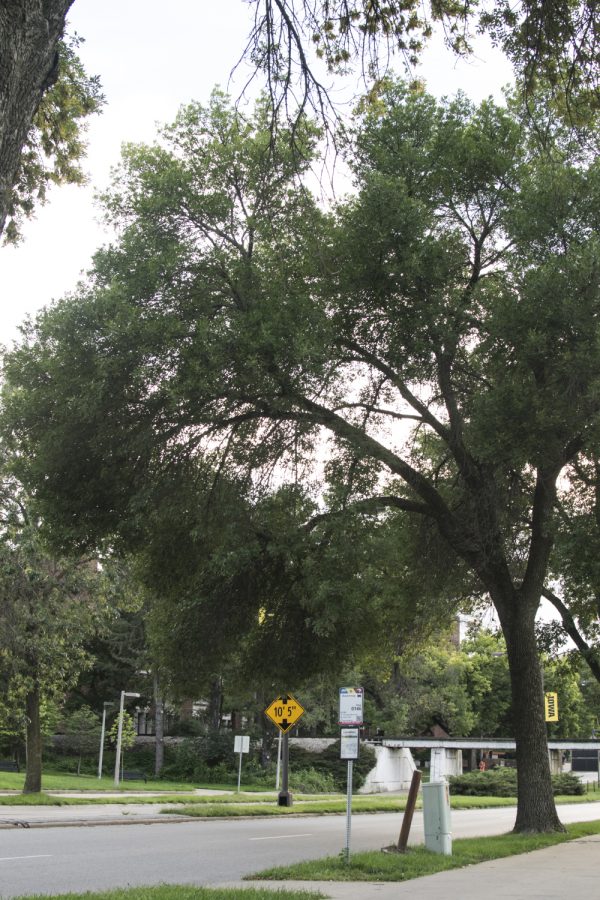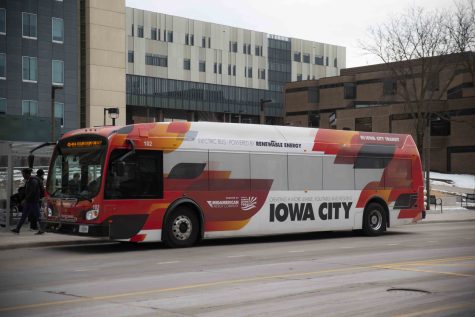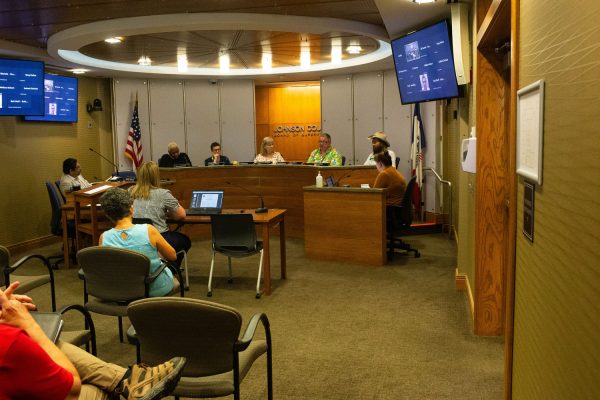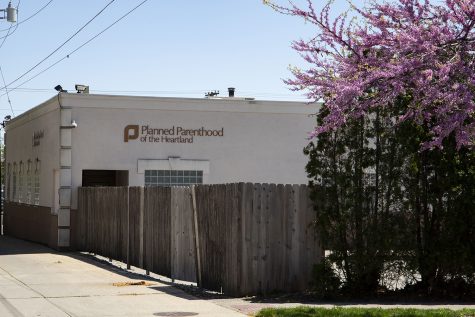New treatment planned for emerald ash borer
The city has decided to start treating ash trees affected by the invasive insect with a pesticide.
An emerald ash tree is seen on Iowa Avenue on Tuesday, Sept. 4, 2018. The City Council will be discussing the city’s current approach to Emerald Ash Borer and its impact on ash trees on public property.
November 29, 2018
Iowa City officials plan a new approach to fight the emerald ash borer, an invasive insect that has quickly spread throughout the city’s ash trees.
The City Council has decided to treat some of the ash trees in the city with an insecticide, Parks & Recreation Department Director Juli Seydell Johnson said.
After deciding to treat some of the trees, the Parks Department conducted a survey to determine which trees were suitable for treatment, Parks Superintendent Zac Hall said.
“We walked from tree to tree, inspecting and looking for any kind of infestation,” he said.
If trees are too badly damaged by the insect, Hall said, they cannot be treated and have to be removed. In the survey, officials found approximately 140 trees that could be treated. There are around 3,500 ash trees in the city, said Mark Vitosh, a district forester for the Iowa Department of Natural Resources in Iowa City.
Treatment will begin in the spring. The insecticide would not be effective in the winter, Hall said, because the beetles are dormant.
After considering the safety concerns that come with treating the trees with pesticides, such as potential harm to water or other wildlife, officials decided the treatment was necessary.
“There’s just some unknowns with any chemical you use in the natural environment,” Seydell Johnson said.
Vitosh said the insecticide is generally safe.
While some insecticides are injected or poured into the ground around the tree, he said, the chemical the city uses is injected directly into the tree. This reduces the risk of contaminating the soil or water in the surrounding area.
The emerald ash borer has been in the United States since 2002, Hall said. It was first found in Iowa City in 2016 near the University of Iowa Main Library, but Vitosh thinks it may have been in the city since 2010.
RELATED: City Council confronts emerald ash borer, impact on Iowa City trees
Despite treatment efforts, the emerald ash borer situation is most likely going to get worse before it gets better, Vitosh said. The infestation has gotten much worse this year, he noted, and these types of infestations usually follow an exponential curve, in which more and more trees start to die very quickly.
“Probably within the next five years, we’re going to get to that exponential stage,” he said.
Eventually, Vitosh said, the infestation will begin to slow down. Even if most of the large ash trees die, there will be a lot of small ones growing that aren’t infected.
“The pest is still going to be around, but if you lose a majority of the big [trees], there is going to drop in the population at some point,” he said.
When trees are too unhealthy to be treated, they need to be cut down, Seydell Johnson said. No one likes to lose trees, and officials plan to only remove trees that are at risk of falling and damaging people or property.
“We only take them down when we feel like it’s a public safety hazard,” she said.
In the next couple of years, she estimates that a significant portion of the ash trees in Iowa City will need to be removed. In their place, the Parks Department plans to plant a diverse range of species so they won’t be susceptible to a single pest or disease.
“That’s really the best way to fight any of this,” Seydell Johnson said.





















